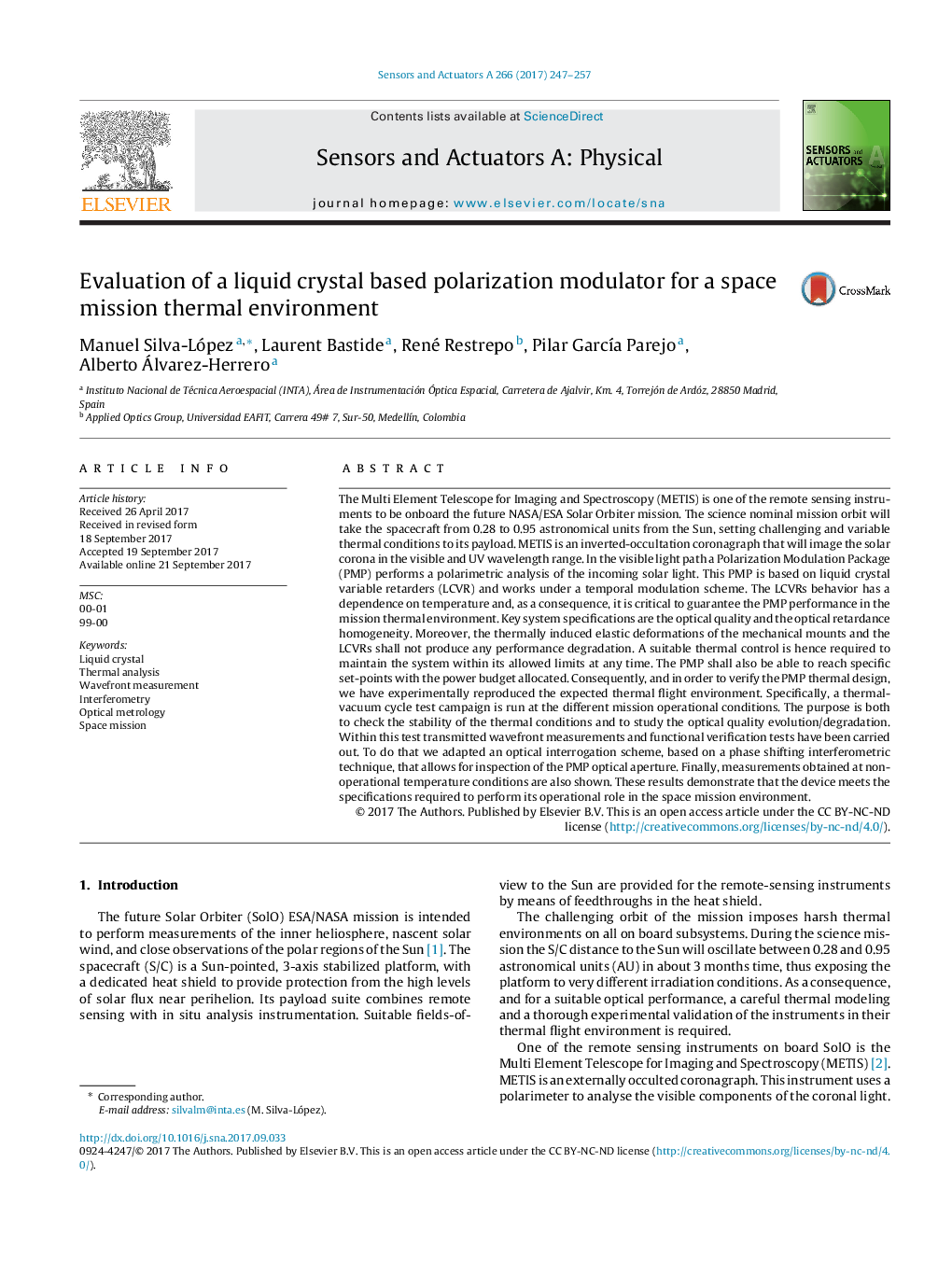| کد مقاله | کد نشریه | سال انتشار | مقاله انگلیسی | نسخه تمام متن |
|---|---|---|---|---|
| 5008174 | 1461834 | 2017 | 11 صفحه PDF | دانلود رایگان |
- Liquid crystal polarization modulator designed for a space mission environment
- Thermal simulation performed to evaluate suitability of the power budget allocated.
- Thermal test campaign with a set-up for optical quality characterization.
- Transmitted wavefront measurements repeatable and within specifications required.
- Optical tests performed at non-operational conditions reveal no device degradation.
The Multi Element Telescope for Imaging and Spectroscopy (METIS) is one of the remote sensing instruments to be onboard the future NASA/ESA Solar Orbiter mission. The science nominal mission orbit will take the spacecraft from 0.28 to 0.95 astronomical units from the Sun, setting challenging and variable thermal conditions to its payload. METIS is an inverted-occultation coronagraph that will image the solar corona in the visible and UV wavelength range. In the visible light path a Polarization Modulation Package (PMP) performs a polarimetric analysis of the incoming solar light. This PMP is based on liquid crystal variable retarders (LCVR) and works under a temporal modulation scheme. The LCVRs behavior has a dependence on temperature and, as a consequence, it is critical to guarantee the PMP performance in the mission thermal environment. Key system specifications are the optical quality and the optical retardance homogeneity. Moreover, the thermally induced elastic deformations of the mechanical mounts and the LCVRs shall not produce any performance degradation. A suitable thermal control is hence required to maintain the system within its allowed limits at any time. The PMP shall also be able to reach specific set-points with the power budget allocated. Consequently, and in order to verify the PMP thermal design, we have experimentally reproduced the expected thermal flight environment. Specifically, a thermal-vacuum cycle test campaign is run at the different mission operational conditions. The purpose is both to check the stability of the thermal conditions and to study the optical quality evolution/degradation. Within this test transmitted wavefront measurements and functional verification tests have been carried out. To do that we adapted an optical interrogation scheme, based on a phase shifting interferometric technique, that allows for inspection of the PMP optical aperture. Finally, measurements obtained at non-operational temperature conditions are also shown. These results demonstrate that the device meets the specifications required to perform its operational role in the space mission environment.
Journal: Sensors and Actuators A: Physical - Volume 266, 15 October 2017, Pages 247-257
